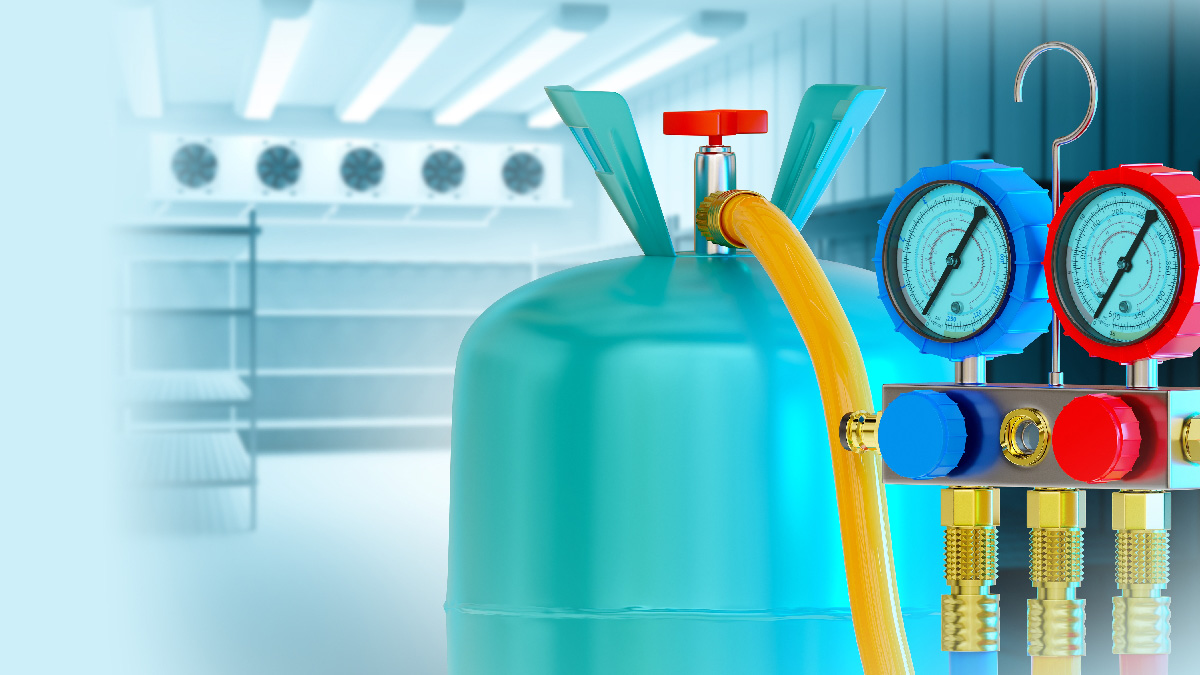


Whether you are from the brewing, food processing, chemical, pharmaceutical, or construction industry, this blog will help you get rid of the cold feet you have regarding refrigerants. This blog will also answer questions such as, what role does perfect temperature control play in the production process. Are the demands for heat load subject to significant variation? And is the cooling’s primary source distinct from harsh environments? First, let’s have a look at the two types of refrigerant gases which include natural and artificial. Take a look at this short overview.
Common natural refrigerant:
Ammonia: Highly toxic and corrosive, cools large cold rooms, goes below -70 C through absorption or compression.
Carbon dioxide: Thermodynamic properties, zero ozone depletion & zero global warming effect.
Sulfur dioxide: Less toxic than ammonia requires robustness
Propane: Low priced, obtained via petrol and thermodynamic
The other type is synthetic refrigerants. These are replaced by the modern HFC (hydro fluorocarbon) gases. HFC refrigerant gases are classified as the third generation of fluorinated refrigerant gases. They were specifically formulated as a definitive and environmentally friendly alternative to CFC and HCFC, as they possess a zero ozone depletion potential.
● Colorless in normal temperature
● Transparent and colorless liquid with its own pressure
● R410A mainly used for air conditioners and non-centrifugal refrigerating systems
R134a is an HFC gas with zero ozone depletion potential (ODP) and a GWP of 1430. It is also an international main refrigerant substance.
Its features include:
● Zero chlorine, zero effect on ozone, nonflammable, non-explosive, noncorrosive
● colorless in normal temperature
● Transparent and colorless liquid with its own pressure
● Generation of heat-protective rigid plastics, blend refrigerant
● Replaceable by (R-513A) or a difluoroethane-based refrigerant gas (R-152a) based on hydro-fluoro olefins
HCFCs are hydro chlorofluorocarbons, and contain less chlorine than CFCs and lower ozone depletion potential (ODP). Examples: HCFCs include R22, R123, and R124.
Features:
● Slush Machine has ⅔ bowls.
● Each is 12 liters
● S/steel base and removable polycarbonate bowl,
● It circulates via a magnetic pump,
● R134a refrigerant, the engine that is hermetically sealed. Italy is a “brass” country. 220V/50Hz/1PH – 350W.
Features:
• Juice dispenser has the capacity to hold either 1,2, or 3 bowls
• Each is 12 liters
• S/steel base and removable polycarbonate bowl,
• With the help of a magnetic pump,
• R134a refrigerant, the engine that is hermetically sealed. 220V/50Hz/1PH – 350W.
Features
● It is an under-counter Machine for Making Ice Cubes, Prod. It is Made of a S/steel 18/8 Scotch bright finish, it has a Cap.24-150Kg/Day range.
● Refrigerant R404A is used in the air cooling system. Italy made it. Used electricity.
● Leading Bahrain when it comes to providing households, restaurants, and commercial buildings with safe gas cylinders in a timely manner.
● With a fleet size twice as large as its rivals, Bahrain’s leading distributor of safe petrol.
● Proven track record of delivering higher on-time deliveries than any other company in Bahrain.
● Modern Household appliances.
● 50 international brands and 1000-plus products.
● Smart buy options and complete product lifecycle through our advisory and post-sales support.
● Catering/Foodservice Equipment.
● 50-plus years of experience.
● 500+projects.
● Foodservice, laundry, and beverage solutions.
● Professional refrigeration equipment.
● All types of laundry.
We hope you had a fair knowledge of what you looking for. If you have any queries, feel free to call Bahrain Gas!
